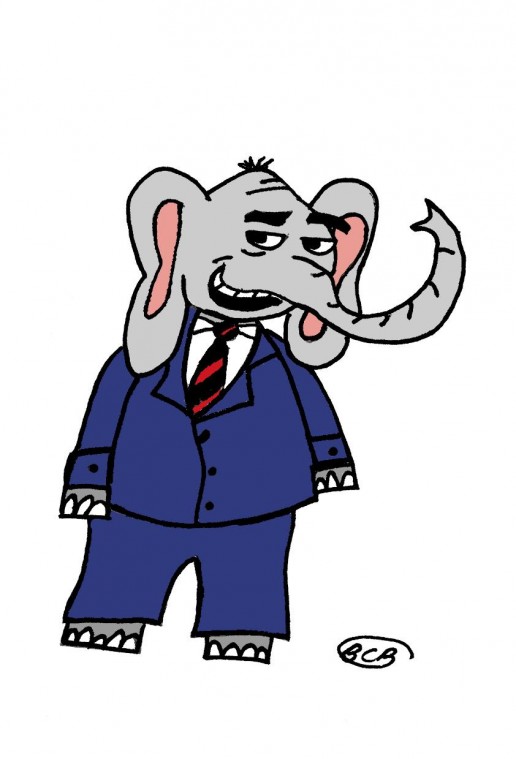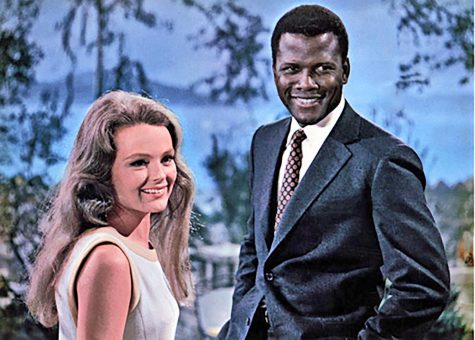Understanding politics: A brief history of conservatism
This article is the first in a two-part series that looks at the philosophical and historical origins of the modern conservative and liberal movements in the United States.
The looming battles between the Democrats and the majority Republican House of Representatives in the nation’s capital only make the term conservatism more important for contemporary politics. How can the same word describe President Dwight D. Eisenhower, President Ronald Reagan and current House Speaker John Boehner? What does it mean to be conservative?
Modern beginnings
Conservatism as a philosophy has endured since the nation’s founding. But modern conservatism can be traced back to the 1950s. The philosophical backlash to the New Deal era of the welfare state began with publications such as William F. Buckley “God and Man at Yale” in 1951 and, later, the conservative magazine “The National Review” in 1955. The goal of Buckley and other conservatives was to fight against ideas such as liberalism and collectivism, choosing instead to emphasize limited government and individual freedom.
The early half of the 20th century saw several presidents that could be labeled as traditional limited-government conservatives, particularly William Howard Taft, Warren G. Harding and Calvin Coolidge. However, much of the country took a turn to the left with Franklin D. Roosevelt and his New Deal policies.
Anti-Communism
The anti-communist atmosphere of the 1950s overcame some resistance to conservatism left in the wake of Roosevelt. While anti-communism was a strong conservative and Republican position in the 1950s, it was certainly not exclusive to the conservatives.
The anti-communist element of the conservative movement reached its zenith in the 1960s with the failed presidential bid of Sen. Barry Goldwater, R-Ariz. In addition to being strongly anti-communist, Goldwater maintained the basic ideals of the conservative movement. His book, “The Conscience of a Conservative,” argued against a welfare state and discussed the dangers of an overly powerful federal government and served as the platform for his 1964 presidential bid.
Social concerns
The moral concerns raised by the 1973 Supreme Court case of Roe v. Wade on abortion heavily motivated the second wave of the conservative movement. The controversy over abortion sparked the formation of the moral majority position (today known as social conservatism); a grassroots movement built on concerns over the diminishing religiosity and moral decline in America. Figures such as Reagan and Southern Baptist pastor Jerry Falwell would further solidify the movement as a powerful conservative force in the 1980s.
In addition, concerns over the gradual erosion of the classic nuclear family, a severe economic recession, and the cynicism and doubt forged in the furnace of Vietnam contributed to the significance of the conservative movement.
While the election of Jimmy Carter in 1977 seemed to suggest a return to pre-McCarthy ideology—and, of course, public outrage over Watergate—continuing economic and foreign affairs problems soured the American people to Carter, who was challenged by the left of his own party.
The Reagan years
Reagan, who nearly defeated then-incumbent President Gerald R. Ford, a moderate, in the 1976 Republican primary, established himself as the conservative standard-bearer in 1980.
Reagan went on to defeat Carter in 1980. The victory marked the marriage of fiscal conservatives and social conservatives. Reagan also brough a third branch of foreign policy hawks that desired a strong military to protect the nation from the Soviet Union.
Reagan united all three branches in his presidency, focusing on fiscal conservatism with his economic policies, social conservatism with his War on Drugs and defense conservatism with his suspension of détente with the Soviet Union and increased military innovation.
The collapse of the Soviet Union following the Reagan presidency ended the Cold War, which had played a major part in defining and validating the conservative movement. The end of the war made defensive conservatism seem obsolete—the call for strong, right-wing leaders that played significant roles in Reagan’s election could not remain relevant with the enemy overcome.
The Bush era
President George H.W. Bush originally campaigned on a more conservative platform, promising no new taxes on the American people. However, he soon compromised on his position, working with Congress to introduce new taxes that would reduce the deficit left from the Reagan years.
This decision played a large part in his loss to Bill Clinton in 1992. However, the conservative vote again played an important role in American politics, as Clinton’s perceived overly leftist policies resulted in Republican control of the House of Representatives for the first time in 40 years.
The election of President George W. Bush soon saw a resurgence of defense-oriented conservative issues. With the attacks on the World Trade Centers and the Pentagon, a foreign policy similar to that of the Cold War emerged as the United States positioned itself to confront the “Axis of Evil.”
Conservatism Today
The religious and social aspects of conservatism also informed several Bush administration policy decisions, as demonstrated in the creation of the White House Office of Faith Based and Community Initiatives, opposition to embryonic stem cell research and general decline to address any gay rights issues.
Today the conservative movement is deciding which of its three guiding principles—fiscal, social and defense—will inform its future political involvement. The argument might come up in the 2012 Republican primary, with each candidate trying to claim the mantle of Reagan.
For now, the populist resurgence of fiscal values represented by the grassroots creation of the Tea Party led to the recent Republican House takeover and is shaping the battle against Democratic President Barack Obama.






